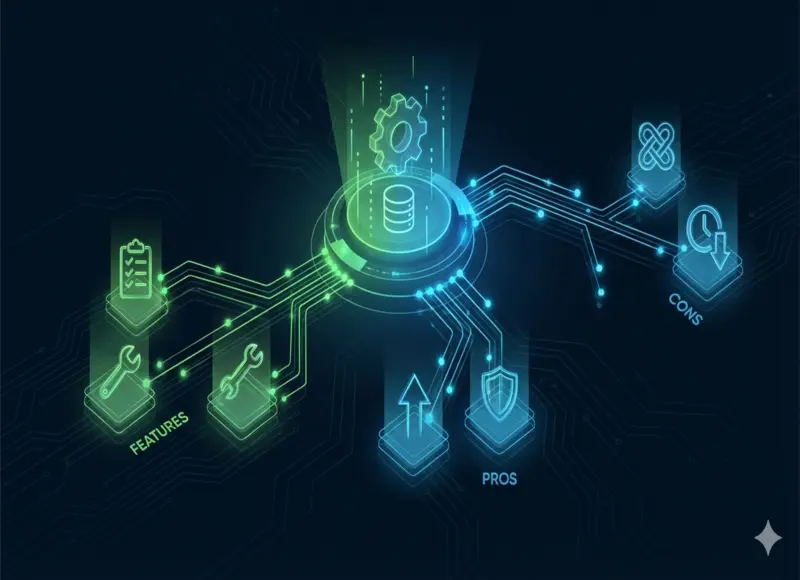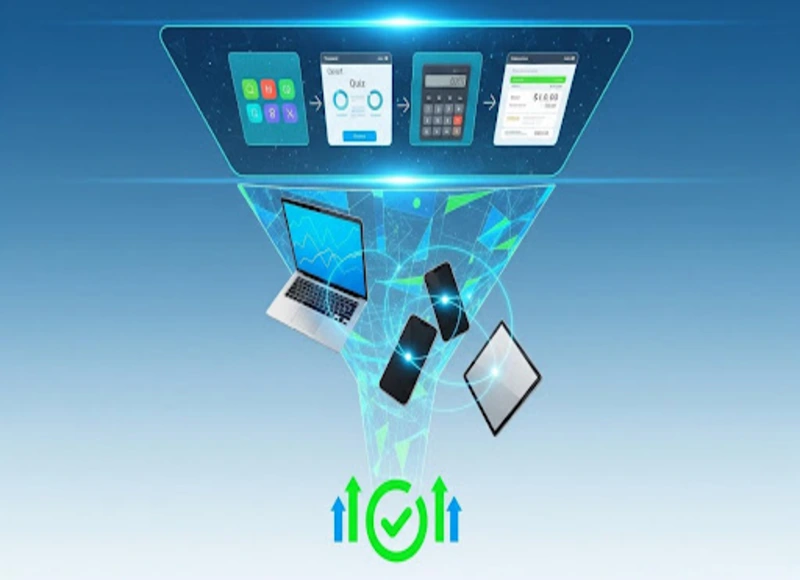Table of Contents
Learn how physical and cybersecurity collaborate to protect your assets on our website. Discover how they synergize to protect in a connected world.

No matter the size or scale of a commercial operation, security will almost always factor into most major business decisions. Whether teams are considering effective ways to safeguard sensitive information or looking into reliable ways to control physical access to assets, data and commercial properties, leaders must prove that security measures are in place.
Traditionally, businesses have been able to easily divide security responsibilities, with IT professionals handling digital security efforts and on-site security personnel left in charge of physical threats. However, modern business security increasingly requires convergence.
With digital and physical systems becoming more interconnected, threats have started to bridge the gap between once-segregated security practices, leaving some organizations unknowingly vulnerable to sophisticated attacks. Threat levels may rise as businesses continue to invest in smart technologies and intertwined cyber-physical systems.
Thankfully, there are proven ways to mitigate these threats, with physical and cybersecurity convergence practices known to help organizations better protect themselves from modern threats. However, it's believed as few as 19% of companies have implemented such policies.
So, when it comes to physical and cybersecurity, how can teams make them work together?
A holistic approach to business security
For modern businesses to effectively manage multi-faceted threats, professionals across key departments must commit to knowledge-sharing initiatives. While in the past it may have been beneficial to uphold information silos, reducing the risk of staff unknowingly exposing sensitive information, the rise of interconnected business systems has created novel threats.
This concept is perhaps best exemplified by the rise of internet-connected physical security devices, including standard technologies like access control and video security solutions. In the past, these devices were usually only able to communicate locally, meaning for a hacker to intercept confidential information, they'd need to compromise installed devices physically.
Nowadays, most commercial security systems are connected via some networked solution, exposing new vulnerabilities for remote attackers to exploit. This means both physical and cybersecurity professionals now need to understand the principles of each other's practices to avoid unintentionally altering systems and exposing new vulnerabilities.
To achieve this, essential physical and cybersecurity components must be defined.
Key physical security components
The key physical security system components associated with the protection of sensitive assets and confidential information in modern business environments include:
- Access control systems - Smart devices used to prevent unauthorized access to specific locations in business environments. Authorized staff are issued personalized credentials granting them access to areas associated with their roles; credentials can be key cards, mobile data, PIN codes or unique biometric information.
- Video security solutions - Installed security cameras, including various types of security cameras such as dome cameras, bullet cameras, and PTZ cameras, are positioned to monitor different locations in and around commercial facilities. Smart solutions, designed to be viewed and adjusted remotely, are becoming increasingly popular among organizations of all sizes. but poorly optimized video streaming tools may be vulnerable to cyber-attacks
- Security alarm systems - Physical alarm systems installed throughout commercial properties warn stakeholders of potential security threats; when connected via the Internet of Things (IoT), modern alarm systems can be configured to alert security teams remotely, though communications must be appropriately encrypted.
- Threat detection systems - Like security alarm systems, threat detection tools can be programmed to warn stakeholders of unfolding security incidents. Specialized IoT sensors like motion, sound, pressure, and temperature detectors provide additional contextual information to improve incident responses.
- Physical security personnel - Professionally trained physical security experts in charge of overseeing on-site security operations and operating all installed physical security systems; as these technologies become more advanced and more reliant on digital communication, more knowledge of cybersecurity risks will typically be required.
Key cybersecurity components
The most commonly utilized components of modern commercial cybersecurity solutions are:
- Antivirus programs - Cyber-attacks involving malicious software, such as phishing and ransomware, are among the most commonly reported incidents; antivirus tools are designed to continuously monitor internal computer systems for signs of known malware attacks, helping teams enact threat responses promptly.
- Encryption software - Encryption tools prevent unauthorized access to digital information by making data communications unreadable to outside sources without a predetermined key; as the commonality of physical security devices designed to use digital communications continues to rise, encryption becomes increasingly important.
- Firewalls - Firewalls are intended to act as a digital barrier around internal networks, continually monitoring incoming and outgoing traffic in search of suspicious activity; if data consistent with a known cyber-attack is detected, real-time protective measures can be engaged to block access, warn stakeholders and engage wider security tools
- Multi-factor authentication - Multi-factor authentication solutions add extra layers of security to internal systems by requiring users to present multiple forms of credential before access is granted; this can involve a one-time code sent to a secure email address or a biometric scan, with MFA thought to prevent up to 99% of cyber-attacks
- Training and management - Cybersecurity tools must be frequently updated and analyzed by trained professionals to ensure active systems do not become exposed to new vulnerabilities; training must also be given to wider employees to ensure staff know how to spot and respond to common incidents and social engineering attempts
The benefits of security convergence
With the key components of both physical and cybersecurity solutions now covered, it should be clear why security convergence is becoming an important concept for modern businesses to consider. As the line between physical and cybersecurity becomes increasingly blurred, professionals working in both departments must become familiar with each other's practices.
If physical security teams are not professionally trained in cybersecurity practices, their decisions about password creation, network configurations, or operational policies could expose key systems to hackers. Likewise, IT teams need to understand how physical security tools work so that their decisions can maintain the integrity of installed systems.
Further benefits associated with the implementation of security convergence policies include:
Strengthened security posture
Combining the technical operation of active security systems and the organizational deployment of such solutions can strengthen a business's overall security posture. Ensuring all installation, configuration, and maintenance decisions are informed by insights provided by both sets of professionals decreases the likelihood of exploits being uncovered.
Risk management practices can be improved, as converged security teams are typically better positioned to predict and prevent cross-platform attacks. Involving both departments in planning, programming, and implementing new security systems offers businesses a more holistic view of their defensive capabilities, helping staff deter sophisticated attacks.
Optimized cross-department communication
Pursuing a converged security policy ensures security professionals across all aspects of an organization communicate potential issues naturally and effectively. This means if a new tool is recommended for use by business leaders, teams can make sure the development and configuration process is performed in line with key physical and cybersecurity best practices.
Over time, the pursuit of this process can help organizations to remove data silos and avoid security risks associated with poor communication. According to research published in 2023, over 50% of US-based security, compliance and risk management professionals struggle to identify the location of critical risks; pursuing convergence can help staff resolve this issue.
Improved efficiency and productivity
Security convergence also helps businesses to optimize the efficiency of numerous essential tasks. The more employees that have an operational understanding of both physical and cybersecurity best practices, the less chance that teams will face time-consuming issues and roadblocks associated with problem-solving efforts, ultimately improving productivity metrics.
Best practices for combining physical and cybersecurity
While the potential benefits of pursuing physical and cybersecurity convergence should now be apparent, designing and implementing an effective convergence strategy can be challenging for even the most resourceful teams. Below are some best practices for combining physical and cybersecurity efforts to help professionals navigate this process.
Commit to intelligence sharing
Organizations must commit to well-planned and regimented intelligence-sharing policies for physical and cybersecurity departments to work together effectively. Secure communication channels should be developed so leaders can update team members regarding new developments, technologies, and best practices alongside frequent in-person meetings.
Conduct frequent risk assessments.
The most reliable way to implement effective converged security measures is to develop a working relationship centred around regular risk assessments. Physical and cybersecurity teams must work together to identify potential threats across all aspects of the organization, implementing new controls and operational policies designed with both departments in mind.
Strengthen access control policies.
Part of an effective risk assessment will involve the continual strengthening of access control policies, primarily as these solutions act as the first line of defence against common attacks. Teams must consider multi-factor authentication solutions utilizing appropriate credentials for high and low-risk deployments and access control models for layered access security.
Plan coordinated incident responses.
Coordinated incident responses are equally important as joint assessments and planning procedures, as converged security teams must know exactly how and when to respond to different threats. For example, suppose an attack on a business's admin system has the potential to compromise connected physical devices like cameras and access systems. In that case, plans must be in place to segregate these security tools, block external access, and re-issue new credentials.
Pursue continuous training programs.
Novel cyber-attacks and related physical security risks are uncovered daily, with reported incidents rising by almost 40% in recent years. For businesses to defend against common threats like phishing, malware and ransomware attacks, all staff must be trained to spot, report and respond to suspicious activity. Converged teams must work together to plan and implement continuous training programs to improve site-wide security postures.
Summary
For modern organizations to effectively protect sensitive assets from sophisticated attacks, leaders must find a way to combine once-segregated physical and cybersecurity practices. As more teams pursue the development of smart security systems, remote-access networks and AI-informed software, the line between security practices becomes increasingly blurred.
By understanding how physical and cybersecurity work together, particularly via the policies and technologies that apply to both practices, businesses can better defend against common attacks. Developing converged security teams in this way ensures risk assessments, training programs, and new installations are always implemented in as secure a manner as possible, helping organizations strengthen their security postures and deter sophisticated attacks.
Recent Blogs
Key Benefits of Hiring Nearshore React.js Development Teams for Enterprise Projects
-
20 Jan 2026
-
10 Min
-
116
Stop Building from Scratch: Boost Your Marketing Funnel with App Templates
-
13 Jan 2026
-
10 Min
-
464







